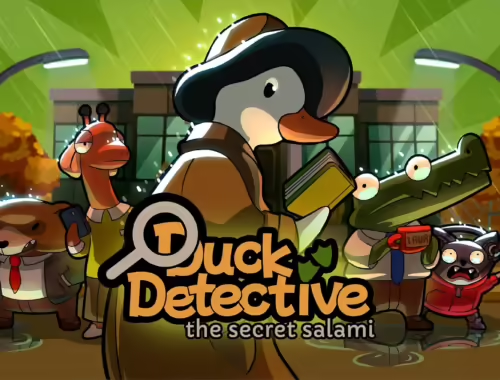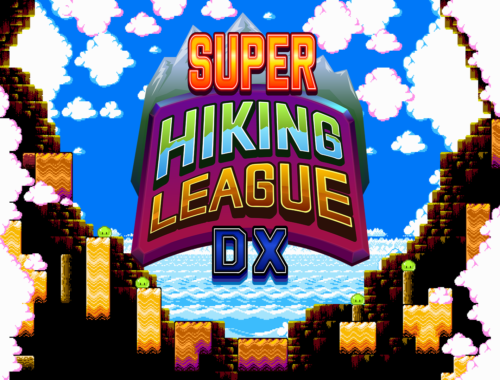Signs of the Sojourner Review
Fast Facts
Signs of The Sojourner
Developer: Echo Night Games, LLC, Bromio
Publisher: Digerati
Website: https://www.echodoggames.com/
Genre(s): Adventure, Other, Role-Playing
Platform: Switch (also available on PS4, XB1, and Steam)
Age Rating: PEGI 3
Release Date: 18/03/2021
Price: £17.99
A code was provided for review purposes
Introduction
Signs of the Sojourner is a narrative card game. The cards in the deck represent the player’s character. Tasked with reestablishing the prominence of the main character’s mother’s shop, the player must travel on a caravan and gather resources. This unique take on a visual novel provides a refreshing spin on digital storytelling.
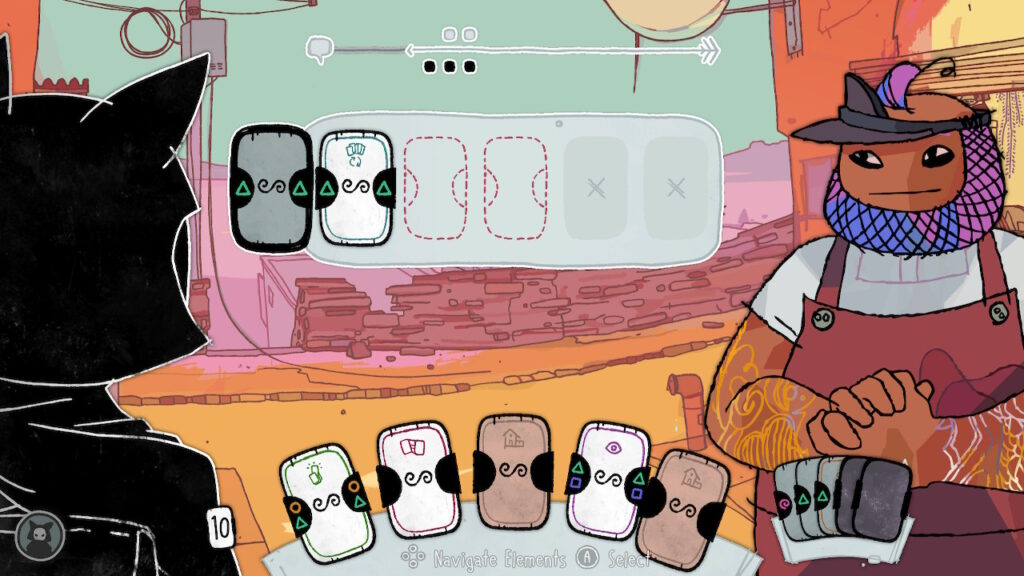
Journey to Save the Shop
The overarching story is simple but sets the plot well. The main character’s mother has recently passed. Because she passed, her shop is struggling, and the town is now at risk of being expelled from the local caravan route. The main character is tasked with joining the caravan and returning the shop to its former glory. The player begins to uncover the truth about her mother and other details of her life on the journey. Finding details about her mother’s past life encourages the player to continue playing and develops an overarching plot.
In addition to the overarching plot, there are smaller story arcs featured in Signs of the Sojourner. Characters met along the journey request help with their problems. The player is tasked with choosing who to help, and how much to help them. For example, one character cannot prevent his younger brother from stealing. He asks the player for help, saying if they were able to bring a mother like figure into the picture, his brother would be more wholesome. The player must then choose whether to go out of their way to encourage this character to move to their town, or to continue collecting goods for their shop. These characters leave a lasting impact on players despite not being at the center of the story. The developers implemented these minor arcs tastefully.
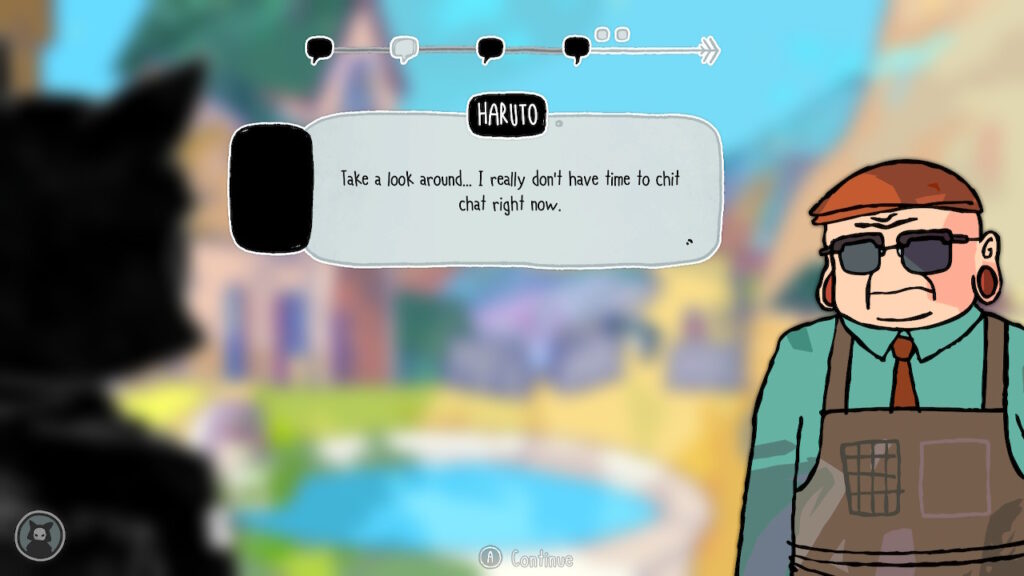
Multiple Endings
Though much of the story is fulfilling, some elements felt out of place. Mismatching cards in the game prompt characters to express a line that symbolizes a lack of chemistry. While in theory these make sense, often the word choice selected for these displays of distaste were awkward and did not fit the mood. Conversation would come to a rigid stop. If you received a certain number of these comments during a single conversation, the conversation would fail, and they would push you away. Once again, conceptually this seems fine, as when people get frustrated, they are less inclined to talk. Unfortunately, this system breaks immersion because if a conversation fails, any information gained during the conversation is forgotten. The conversation is unable to be understood simply because the conversation ended poorly. Though this ensures the player receives a single ending, restricting progress in this manner is forced and frustrating.
Although restricting conversation between people can be forced, it allows every playthrough of the game to be slightly different, and even allows for multiple endings. The game frequently comments that due to the dissonance between personalities, some stories will not be accessible on every run and that players need to delicately select which personality they wish to embody. This is an incentive for players to replay the game even once they finished it, as they will be able to see new content and understand characters further. The story decisions leave the player yearning for more and will enthrall the player throughout the entire journey.
Cards? In a Visual Novel?
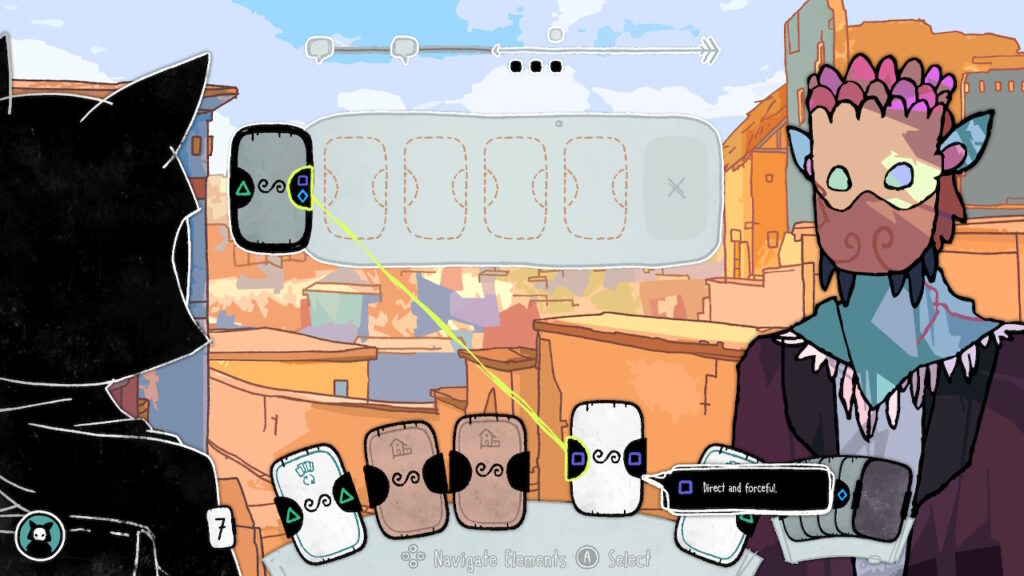
To supplement the story, the developers of Signs of the Sojourner included cards, symbolic of personality types, that players must match with their conversation partner. The player and NPC take turns placing cards. Cards are given a variety of the five different symbols in the game. The player attempts to match symbols with the previously placed card. Playing a consecutive number of cards that match will spark a positive conversation. However, mismatch the symbols once and the player will endure a negative conversation. Not only this, but a mismatched card will often prohibit the conversation partner from matching, meaning each mismatch has the possibility to give two negative conversations. This is frustrating, especially considering how players will want to adapt their deck to discuss with as many people as possible. Regardless, the gameplay loop is intuitive and enjoyable. It represents personality types well.
After each conversation, the player is prompted to choose a card that their conversation partner used and add it to their own deck. This is symbolic of how people mold their personalities around others. Though sometimes talking to a character would force the player to insert a card they do not like, this mechanic strengthened the message of the game, and reinforced how influential people are to others. While players may wish that they had the option to rescind this additional card, mandating that the player takes one encourages the player to consciously decide who their friends should be. The developer’s decision to have conversation shape personalities was excellent and made the game more relatable.
Show me your World
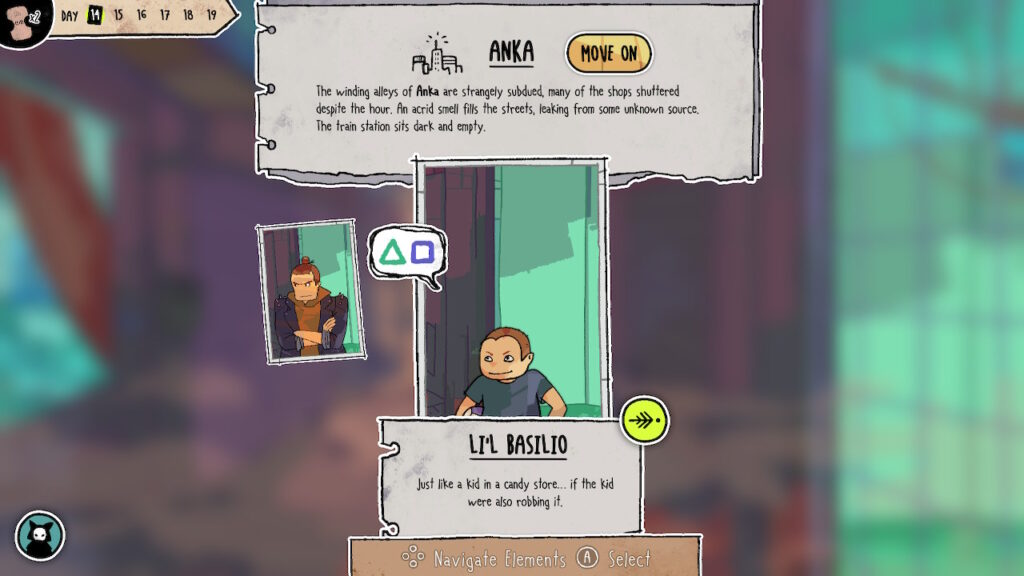
Each conversation also yielded other rewards. Some of the characters discuss pathways and develop the player’s map. The player travels throughout various towns and other locales. The caravan has a set route, but the player may deviate from it. Unfortunately, this was never explained, and it may lead to the player feeling forced to continue alongside the caravan instead of travelling alone. Regardless, the map is designed well. Initially it ensures players move linearly, as they do not have the map uncovered. However, once time passes, they can move wherever they want, and fast travel pathways allow them to blaze their own trail.
Another feature the developer included was fatigue cards. As time passes on each trip, players receive them. Fatigue cards are shuffled into the player’s deck and cannot match with any cards. These represent the emotional exhaustion that arises from talking with people consistently and being away from home. While this is symbolic of a genuine feeling, this is extremely punishing to players. This decision makes the game difficult, but it makes the gameplay loop more frustrating. The player can occasionally be overwhelmed by these cards, having an entire hand of unplayable cards. Not only do these give the player one negative response, but they guarantee that the player’s conversation partner also cannot reply, meaning there will be two negative responses. Though in theory adding challenge and reinforcing their message with fatigue cards is intriguing, at times the implementation can be burdensome on the enjoyment of the player.
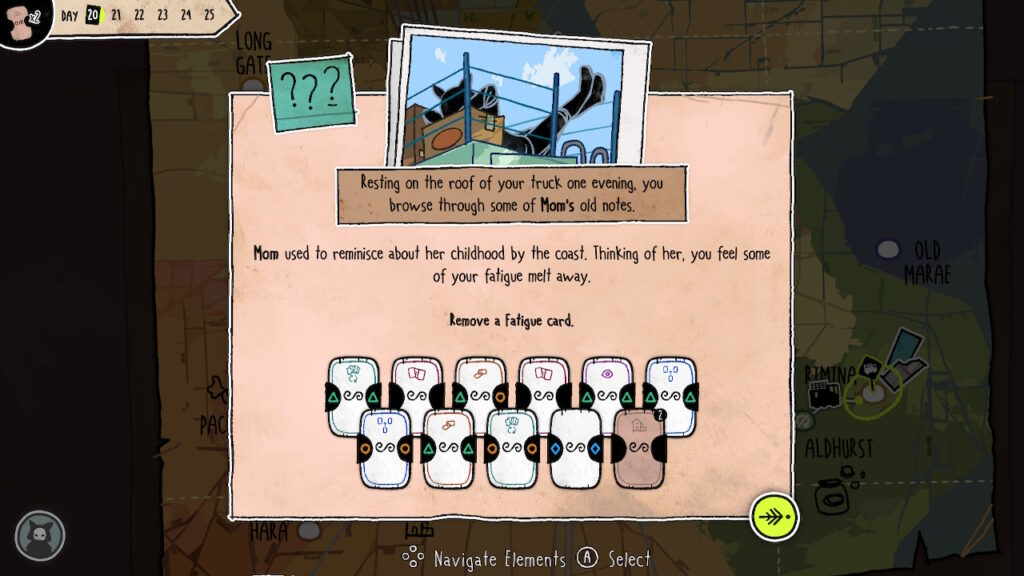
Stalker!
While some of the cards were frustrating, other cards promoted strategic gameplay. Some cards have unique abilities that grant additional information or leverage to the player. For example, one of these traits allows the player to observe the cards of their conversation partner. Others shuffle the player’s hand or allow them to place down multiple cards consecutively. These special cards give the player power over their conversation and offer crucial insights when played correctly. Including these special cards in Signs of the Sojourner deepen the gameplay and encourage skillful thinking.
Ample Ambience
Additionally, the sound design in Signs of the Sojourner is heartwarming. The message provided by the game would not be complete without it. It greatly improved the gameplay experience. Even the simple sound of cards shuffling was therapeutic and added to the pleasant atmosphere.
Moreover, the visuals were well crafted. They were warm and relaxing, setting the tone of the game well. Each town was distinct, and they were all welcoming to the player. Furthermore, character designs were diverse, including human and non-human creatures to interact with. The quality of the visuals shined throughout the game.
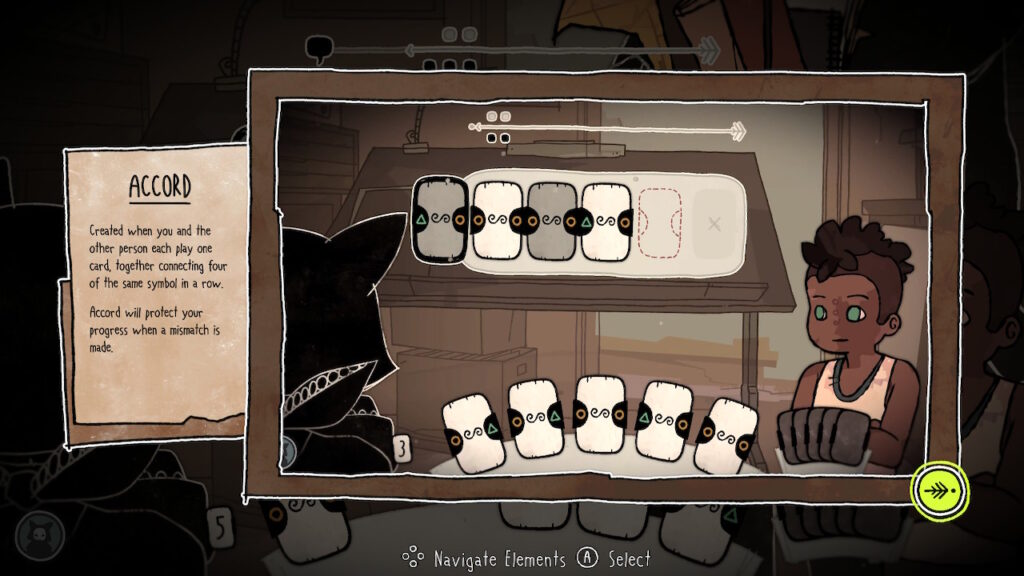
Conclusion
All in all, Signs of the Sojourner is an interesting and unique visual novel. While the gameplay is not perfect, the card mechanics work well, and are an excellent supplement to the good story, and cozy environment. In addition, the game is quite short, coming in at around five hours long. Despite some drawbacks, Signs of the Sojourner is a very enjoyable title. I had a lot of fun playing this game.
Rapid Reviews Rating

4 out of 5
4
You can purchase Signs of the Sojourner here on the Nintendo eShop

You can find and read our reviews on OpenCritic.



